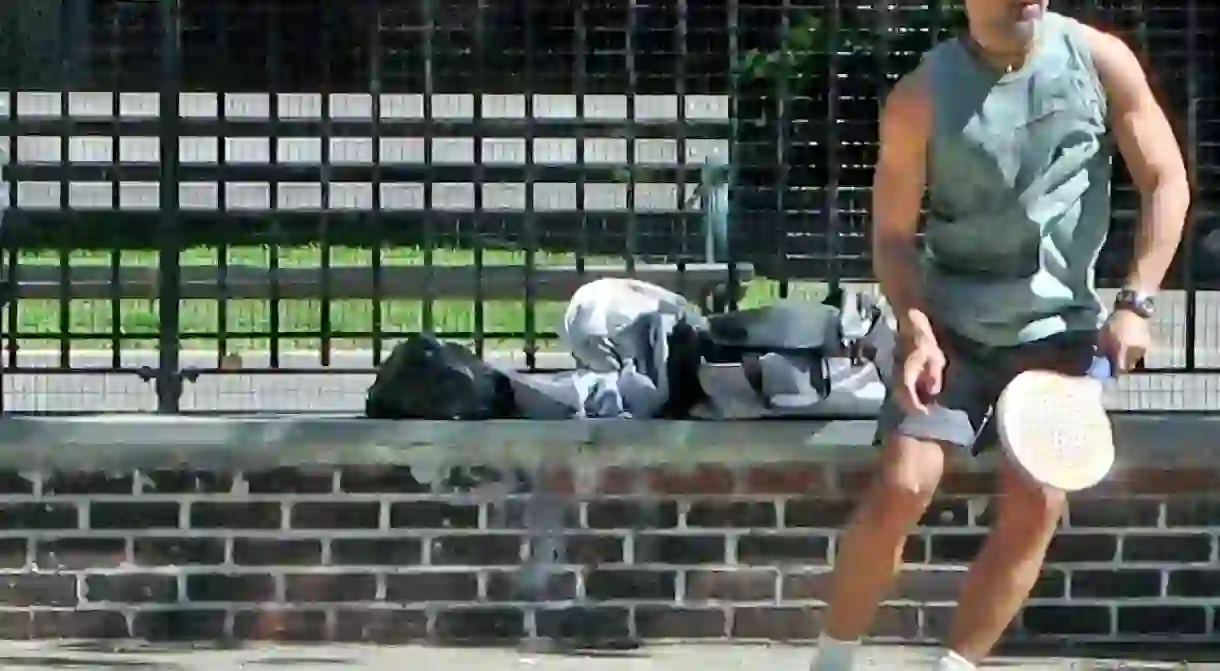Paleta Fronton: What to Know About Peru's Homegrown Sport

Think tennis, and then move both players to one side of the court. Eliminate the net and add a handball wall, and then replace a tennis ball for a small rubbery one and you have paleta fronton. It has the boundaries of tennis, the wall of handball, the ball of racquetball and the intensity of soccer in Latin America. Here’s our guide to understanding Peru‘s unique game of paleta fronton.
Background
The crowd is going wild around what looks like the handball court you’d play on in grade school. The shouting grows louder with every whaaaaaack, and the crowd gives way – not to 11-year-olds playing handball behind an overly encouraging crowd, but to two adult men hitting a rubber ball against a handball wall in a court where the line markings resemble those of a tennis game. The two men, dancing around each other in this shared court, lunge and heave as they try to return their opponent’s hits back against the wall. This is one of Peru’s most popular sports – in Lima, anyways – and it’s called paleta fronton.
The court
The court is usually around 10-12 meters (33-39 feet) long and 8 meters (26 feet) wide, with a wall serving as the focal point. The floor is split into two halves, with one serving from one section to the opponent who stands in the other section. The players face the wall as if their destiny depends on its givings.
How to play
A player serves from his rectangle into his opponent’s. If it doesn’t make it in, they switch servers. After the player serves the ball into the opponent’s rectangle, the opponent can then hit the ball where ever he wants – similar to racquetball. The players then continue until someone doesn’t return it to the wall. The ball is allowed to bounce once before the player hits it – anything more than that is a point for the opponent. Once the server loses a point he switches rectangles and the opponent serves.
History
The sport began in Lima and has since seen a rise in popularity around the country, with people playing the sport in nearly every region. While it isn’t as popular as soccer, volleyball or surfing, the sport is played recreationally in all big cities in Peru. It isn’t as accessible to play as soccer, as you won’t find public courts to play on in Peru – most courts are within private facilities which require memberships, which ultimately excludes many potential players and prevents future growth. It’s been suggested that the sport should take a lesson from soccer, which has cement and grass fields all over Peru, both private and public.













